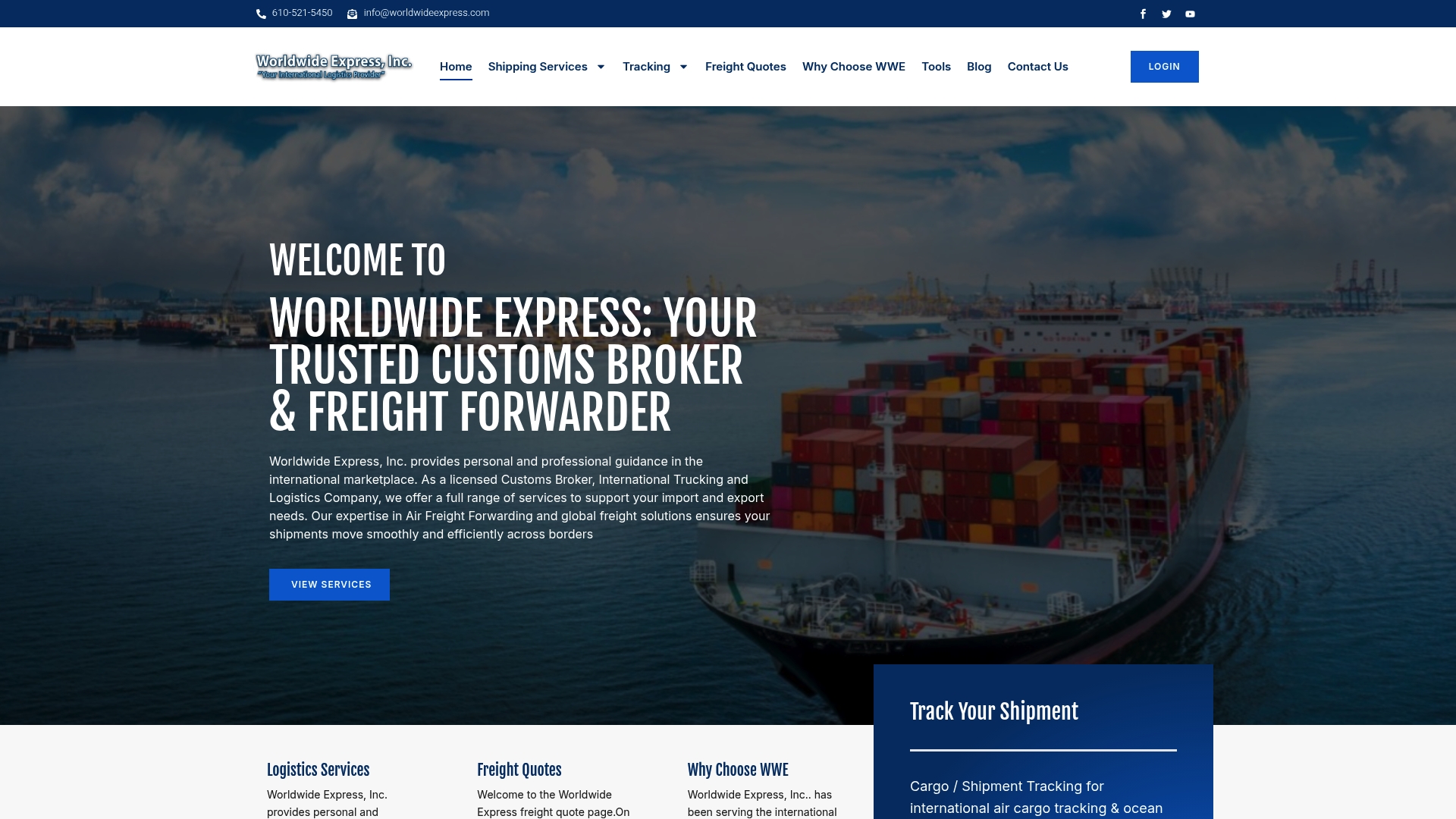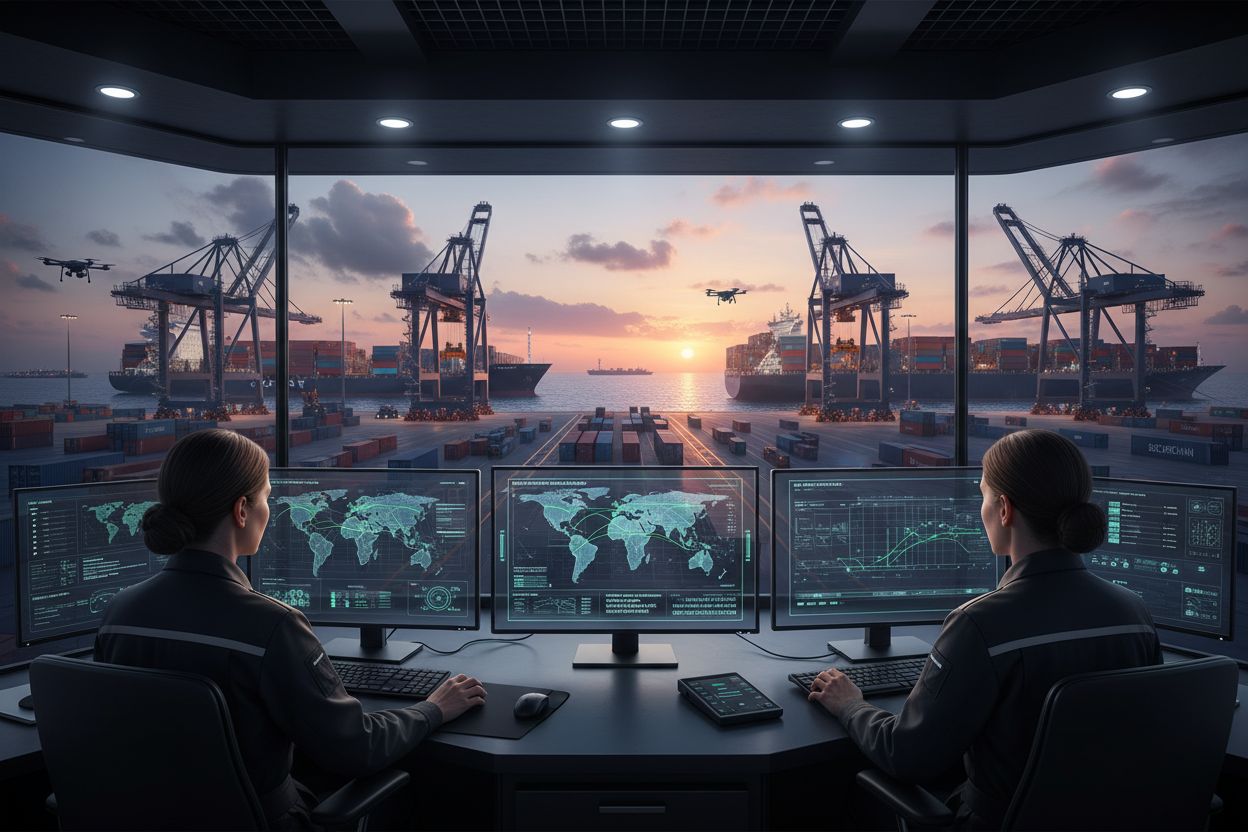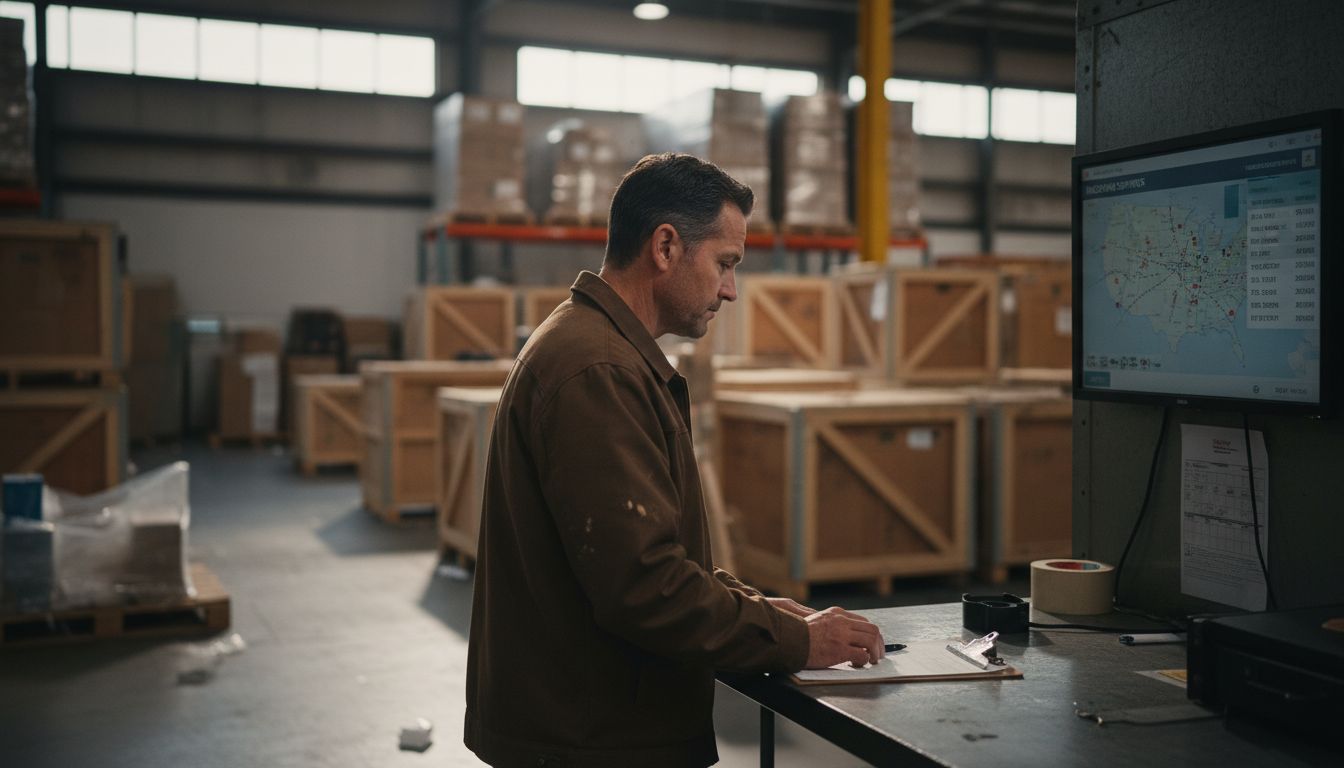Nearly 30% of global shipping documents are lost or delayed every year, causing costly setbacks across international supply chains. With rising demands for transparency and security, shipping leaders are searching for reliable ways to track cargo and verify transactions. Blockchain technology offers a powerful solution, promising tamper-proof records, faster paperwork, and real-time visibility that could dramatically reshape the future of global logistics.
Key Takeaways
| Point | Details |
|---|---|
| Blockchain Enhances Security and Transparency | Blockchain technology ensures secure, immutable tracking of goods, facilitating real-time cargo monitoring and reducing fraud. |
| Operational Efficiency Through Smart Contracts | The use of blockchain enables automated contract execution, minimizing paperwork and administrative costs. |
| Collaboration Among Stakeholders | A decentralized digital ledger allows simultaneous access to accurate information for shipping companies, customs, and logistics providers, improving communication and reducing errors. |
| Regulatory Evolution is Critical | Legal recognition of blockchain is advancing, with emerging frameworks supporting the integration of digital records into formal regulatory systems. |
Table of Contents
- Defining Blockchain In Global Shipping
- Blockchain Applications In Freight And Logistics
- Integrating Blockchain With Supply Chains
- Legal, Compliance, And Regulatory Issues
- Risks, Costs, And Implementation Challenges
Defining Blockchain in Global Shipping
Imagine a technology that could transform how global shipping operates – making transactions more transparent, secure, and efficient. Blockchain is precisely that revolutionary technology. At its core, blockchain is a decentralized digital ledger that records transactions across multiple computers in a way that is virtually impossible to alter or hack.
In the shipping industry, blockchain acts like a digital passport for goods, tracking their entire journey from origin to destination with unprecedented transparency. Read more about digital freight innovations that complement this technology. According to research from marine logistics experts, blockchain enables secure tracking by creating an immutable record of every transaction and movement, which means:
- Instant verification of shipping documentation
- Reduced reliance on manual paperwork
- Enhanced security against fraud
- Real-time tracking of cargo movements
- Automated processes through smart contracts
The technology fundamentally reimagines information sharing among shipping stakeholders. By decentralizing data and creating a shared, tamper-proof system, blockchain eliminates traditional bottlenecks in global trade.
 Shipping companies, customs authorities, and logistics providers can now access the same accurate information simultaneously, dramatically reducing errors, delays, and miscommunications that have historically plagued international shipping transactions.
Shipping companies, customs authorities, and logistics providers can now access the same accurate information simultaneously, dramatically reducing errors, delays, and miscommunications that have historically plagued international shipping transactions.
Blockchain Applications in Freight and Logistics
Blockchain technology is revolutionizing freight and logistics through innovative platforms that transform traditional supply chain operations. TradeLens, a collaborative platform by Maersk and IBM, represents a prime example of blockchain’s transformative potential. Learn more about transloading logistics strategies that complement these technological advancements.
According to research in maritime science, blockchain applications are delivering significant operational benefits. Platforms like CargoX are introducing blockchain-based electronic bills of lading, which can reduce administrative costs by approximately 15% while dramatically enhancing document security and traceability. These digital solutions replace traditional paper-based processes with secure, transparent, and instantly verifiable digital records.
Key blockchain applications in freight and logistics include:
Here’s a comparison of blockchain applications in freight and logistics:
| Application Area | Traditional Approach | Blockchain-Enabled Approach |
|---|---|---|
| Cargo Tracking | Manual updates Paper logs |
Real-time digital tracking |
| Documentation | Paper bills of lading | Blockchain e-documents |
| Fraud Prevention | Stamp/signature verification | Immutable records |
| Inventory Management | Manual/excel systems | Automated, transparent systems |
| Contract Execution | Legal/physical contracts | Automated smart contracts |
| System Integration | Siloed, low connectivity | Decentralized, IoT integration |
- Real-time cargo tracking and monitoring
- Decentralized container movement verification
- IoT device integration for enhanced traceability
- Fraud reduction through immutable transaction records
- Streamlined inventory management systems
- Automated smart contract execution
Research suggests these blockchain innovations could potentially increase global trade volume by up to 15% and contribute to a 5% GDP growth.
![]() By eliminating intermediaries, reducing paperwork, and creating transparent, secure transaction networks, blockchain is not just an incremental improvement but a fundamental reimagining of how global logistics can operate.
By eliminating intermediaries, reducing paperwork, and creating transparent, secure transaction networks, blockchain is not just an incremental improvement but a fundamental reimagining of how global logistics can operate.
Integrating Blockchain With Supply Chains
Blockchain integration into supply chains represents a transformative journey that goes beyond simple technological implementation. Supply chain transformation requires strategic planning, understanding emerging technologies, and reimagining traditional operational frameworks. Read more about trade documentation processes that are critical to this technological evolution.
According to recent bibliometric research covering 2016–2023, blockchain integration is experiencing rapid growth across logistics ecosystems. The primary drivers include enhanced security, improved traceability, smart contract capabilities, sustainability initiatives, and alignment with Industry 4.0 principles. These emerging themes suggest that blockchain is not just a technological upgrade but a comprehensive approach to modernizing supply chain management.
Key considerations for successful blockchain integration include:
- Developing robust technical infrastructure
- Ensuring interoperability between existing systems
- Creating standardized digital documentation protocols
- Training personnel in blockchain technologies
- Implementing secure data exchange mechanisms
- Managing organizational change and technology adoption
However, current research indicates that blockchain’s practical integration remains in early stages. While digital bills of lading, traceability solutions, and smart contracts show promising applications, technical standards and mature implementation frameworks are still evolving. Organizations must approach blockchain integration as a strategic, long-term transformation rather than a quick technological fix, focusing on gradual, thoughtful implementation that aligns with specific supply chain needs and objectives.
Legal, Compliance, and Regulatory Issues
Blockchain technology is rapidly transforming legal and regulatory landscapes across global shipping and trade. Legal recognition of blockchain and smart contracts is emerging as a critical frontier in international commerce. Learn more about international trade compliance to navigate these complex regulatory environments.
According to legislative developments in the United States, multiple states including Vermont, Arizona, Nevada, Delaware, and Illinois have already enacted specific legislation recognizing blockchain-based records and smart contracts. For instance, Vermont now permits blockchain records under its rules of evidence, while Arizona has amended its Electronic Transactions Act to explicitly include blockchain technologies.
Key legal and regulatory considerations for blockchain in shipping include:
- Establishing legal equivalence for electronic documents
- Defining jurisdictional frameworks for digital transactions
- Creating standardized validation mechanisms
- Ensuring data privacy and security compliance
- Developing cross-border regulatory standards
- Protecting intellectual property rights in digital ecosystems
Internationally, the UNCITRAL Model Law on Electronic Transferable Records (MLETR) represents a significant advancement. This model law provides functional equivalence for electronic documents like bills of lading and supports implementation through distributed ledgers. With G7 members, including the United States, endorsing related principles, blockchain-based trade document reform is gaining substantial momentum. These developments signal a global shift towards recognizing and integrating blockchain technologies into formal legal and regulatory frameworks.
Risks, Costs, and Implementation Challenges
Embracing blockchain technology in shipping is not without significant hurdles. While the potential benefits are substantial, organizations must carefully navigate a complex landscape of technological, financial, and operational challenges. Learn more about international trade compliance strategies that can help mitigate these implementation risks.
According to comprehensive research, logistics organizations face multiple practical challenges when adopting blockchain. These include high infrastructure implementation costs, extensive staff training requirements, and comprehensive process redesign. The technological constraints are equally demanding, with scalability and performance limitations presenting significant barriers to widespread adoption.
Key risks and implementation challenges include:
- High initial technology infrastructure investment
- Complex staff training and organizational change management
- Performance and scalability technical constraints
- Substantial energy consumption requirements
- Reduced privacy due to shared ledger systems
- Regulatory uncertainty across different jurisdictions
- Complexity of integrating blockchain with existing legacy systems
While blockchain promises enhanced security and transparency, organizations must carefully weigh the substantial upfront costs against potential long-term benefits. Practical implementation requires a strategic, phased approach that considers technological maturity, regulatory landscapes, and organizational readiness. Successful blockchain adoption demands not just technological investment, but a holistic transformation of existing logistics and supply chain management practices.
Are Blockchain Shipping Challenges Slowing Your Business?
If deciphering blockchain’s role in global shipping feels overwhelming, you are not alone. Many businesses struggle to convert digital innovations, like smart contracts and blockchain traceability, into real operational improvements. Issues such as compliance, documentation, and secure tracking can cause costly delays or missed opportunities. If you want to unlock the benefits of advanced shipping technology but worry about legal risks and complicated integration, Worldwide Express can help.

Experience the difference of a logistics partner who understands both technology and trade. Let Worldwide Express turn complex blockchain discussions into real advantages for your supply chain. Visit our main site to discover proven expertise in customs, compliance, freight forwarding, and global tracking. If you have unique needs or want to explore tailored solutions, check our Uncategorized Services for the latest strategies. Stop missing out on technology-driven efficiency — connect with our team now and see how seamlessly your operations can run when innovation meets experience.
Frequently Asked Questions
What is blockchain technology in shipping?
Blockchain technology in shipping is a decentralized digital ledger that records transactions securely and transparently across multiple computers, making it virtually impossible to alter or hack. It tracks the entire journey of goods from origin to destination, improving transaction efficiency and security.
How does blockchain enhance cargo tracking in logistics?
Blockchain enhances cargo tracking by providing real-time digital monitoring, eliminating manual updates and paper logs. It creates an immutable record of every transaction, allowing all stakeholders access to the same accurate information simultaneously, thus reducing errors and delays.
What are the benefits of using blockchain for documentation in shipping?
Using blockchain for documentation replaces traditional paper-based processes with electronic documents that are secure, transparent, and easily verifiable. This innovation can reduce administrative costs, enhance document security, and streamline the validation process.
What challenges do organizations face when integrating blockchain into their supply chains?
Organizations face several challenges when integrating blockchain, including high initial infrastructure costs, the need for extensive staff training, scalability issues, regulatory uncertainty, and the complexity of integrating with existing legacy systems.
Recommended
- Understanding Bill of Lading Types in Trade Transactions – Worldwide Express, Inc.
- Understanding What is a Shipping Manifest – Worldwide Express, Inc.
- How to Read a Bill of Lading: A Step-by-Step Guide – Worldwide Express, Inc.
- Understanding Logistic Providers: Key Concepts Explained – Worldwide Express, Inc.






